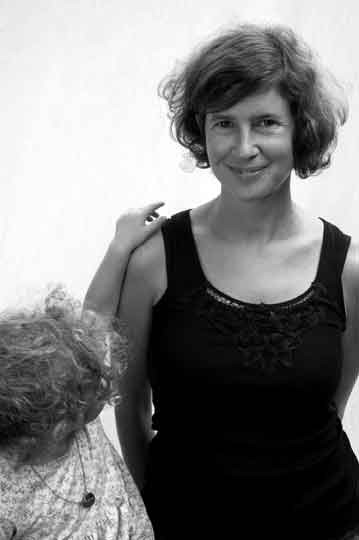Yet, though it is like this, simply, flowers fall amid our longing,
and weeds spring up amid our antipathy.
— Dogen Zenji, Genjokoan
“What do you think, Rahula: What is a mirror for?”
“For reflection, sir.”
“In the same way, Rahula, bodily actions, verbal actions, and mental actions are to be done with repeated reflection.
—From the Middle Discourses of the Buddha [Rahula is the Buddha’s son]
At the heart of all Buddhist practice is what the Buddha realized, sitting under a tree in India 2,500 years ago: The universe is already in complete harmony with itself. No need to do anything. As simple as this might sound, even the Buddha had to work really hard to let go of trying.
At 29, Prince Shakyamuni left the bliss of his palace to embark on a spiritual journey, the passion of which most of us can only imagine. He outdid each master he met, and starved the pants off the most devoted ascetic. Having reached the limits of what was offered in the spiritual communities of his time, he nearly died, emaciated and exhausted. Luckily for us, a local girl found him, and offered him some rice and milk, which he decided to eat. And with this bowl of food, he set off on his own path, the Middle Way, abandoning both the indulgence of his royal upbringing and the fasting of his religious search. He recalled the way he sat as a little boy under a rose-apple tree, and had a feeling that might lead to something. And so he sat there, beneath a bodhi tree for 49 days.
At the end of those seven weeks, the prince had seen through each and every possible permutation of human life, realizing, with unparalleled joy, the impermanence of all things. Each being and creature and rock and speck of dust is exactly what it is: its very own self, yet interdependent, empty of a fixed form—manifestations of the luminous, universal perfection—the Buddha nature. As my late teacher Daido Roshi used to say, each one of us is “perfect and complete, lacking nothing.” The Buddha had freed himself of suffering, and in so doing, proclaimed, “I and all beings, at once, attain the way.”
Zazen has been handed down to us as an opportunity to sit as the Buddha sat, in complete intimacy with the nature of things. As I have sat in that posture for the past fifteen years, and worked with my mind as the Buddha instructed in his 40 years of teaching, and as my teachers have guided me, I have seen my life go from one of pretty drastic suffering to one of relative ease. My good fortune is aplenty, and my internal state is, compared to the hell-realm of my late twenties, pretty darn relaxed. And still, there is this darkness, this broken-heartedness, a compulsion, really, to see myself, and thus the world, through the belief that I am flawed and should not, under any circumstances, be satisfied with myself as I am.
The word the Buddha uses for such habit patterns is attachment, which makes it sound spiritual, but its flavor is sometimes so humiliatingly mundane it’s easily passed over as anything worth shining a spiritual light upon. After all, aren’t women supposed to hate themselves? Especially their bodies? At least a little? Sure, we all have the Buddha nature, which is awesome, but cellulite? Really? It’s included?
Due to some recent meanderings, I found myself on Oprah’s website, and watched a feature about disordered eating where women web-cammed themselves, staring into the camera saying things, “I am not hungry, but I am going to eat this cake right now,” their eyes narrowed at themselves, desperate and sad, stuffing themselves. “I hate myself so much,” one woman said to the camera, close up. “I have no self-control.” If this kind of despair over food were the case for an unfortunate few, that would be a bummer for them, but unfortunately, it’s a culture-wide manifestation of our extreme disembodiment. And it can be very subtle. And contagious. And worthy of spiritual medicine. As one rabbi said to an anorectic girl in his congregation, “God wants you to eat.”
And that’s the trick, for me: tolerating the resistance to practicing this. When I am willing to accept that my “bodily actions, verbal actions, & mental actions are to be done with repeated reflection,” even when they involve mean voices about my thighs and my hunger, the mirror of practice enlarges. And the shameful self-loathing becomes a barrier like any other, which is a relief because if this practice has taught me anything, it’s how to work with barriers: see it, acknowledge it, let it go. From murderous rage to vague discomfort, seeing through suffering is what the Buddha taught. Nothing excluded.
Enter my favorite five-year-old, who, in a fit of basic, human discomfort, has been known to toil in front of her reflection and say, “Mommy! I don’t look good!!” It is clear that all the important work T and I do to protect her from the terrible messages about girls in our world, and from Fat-Talk and dieting schemes and even orthorexia (the obsession with healthy eating), and all the ways we encourage her to be strong and powerful and smart, it’s a losing battle, really, if I am quietly beating myself up for my real and imagined “imperfections.” Talk is cheap. Every parent knows that. Our kids are watching. My girl is riveted. Whether I am aware of it or not, I am teaching her how to be a woman. Ultimately, there is no guarantee that she will be a happy person, awake in her good-enough body and life, but I am in the position to help her, so I will. By facing into the cellular-level shame about who I think I am. And by practicing, for myself, the radical acceptance the Buddha taught, and passing those karmic seeds on to Azalea.
Courtney E. Martin writes, in the Christian Science Monitor:
“Overlay our dearth of spiritual exploration with our excess of training in ambition and you have a generation of godless girls, raised largely without a fundamental sense of divinity. In fact, our worth in the world has always been tied to our looks, not the miracle of mere existence.”
I have heard people say that by having children we have the opportunity to heal our own childhood wounds. I have never really understood what that means. But one of the teachings of the Buddha is about karma, and how it moves in every direction, including backward. It doesn’t make any sense, but I have a feeling that the fundamental sense of divinity I see so clearly in Azalea is transforming the godless girl I once was.
“For reflection, sir.”
“In the same way, Rahula, bodily actions, verbal actions, and mental actions are to be done with repeated reflection.
—From the Middle Discourses of the Buddha [Rahula is the Buddha’s son]
At the heart of all Buddhist practice is what the Buddha realized, sitting under a tree in India 2,500 years ago: The universe is already in complete harmony with itself. No need to do anything. As simple as this might sound, even the Buddha had to work really hard to let go of trying.
At 29, Prince Shakyamuni left the bliss of his palace to embark on a spiritual journey, the passion of which most of us can only imagine. He outdid each master he met, and starved the pants off the most devoted ascetic. Having reached the limits of what was offered in the spiritual communities of his time, he nearly died, emaciated and exhausted. Luckily for us, a local girl found him, and offered him some rice and milk, which he decided to eat. And with this bowl of food, he set off on his own path, the Middle Way, abandoning both the indulgence of his royal upbringing and the fasting of his religious search. He recalled the way he sat as a little boy under a rose-apple tree, and had a feeling that might lead to something. And so he sat there, beneath a bodhi tree for 49 days.
At the end of those seven weeks, the prince had seen through each and every possible permutation of human life, realizing, with unparalleled joy, the impermanence of all things. Each being and creature and rock and speck of dust is exactly what it is: its very own self, yet interdependent, empty of a fixed form—manifestations of the luminous, universal perfection—the Buddha nature. As my late teacher Daido Roshi used to say, each one of us is “perfect and complete, lacking nothing.” The Buddha had freed himself of suffering, and in so doing, proclaimed, “I and all beings, at once, attain the way.”
Zazen has been handed down to us as an opportunity to sit as the Buddha sat, in complete intimacy with the nature of things. As I have sat in that posture for the past fifteen years, and worked with my mind as the Buddha instructed in his 40 years of teaching, and as my teachers have guided me, I have seen my life go from one of pretty drastic suffering to one of relative ease. My good fortune is aplenty, and my internal state is, compared to the hell-realm of my late twenties, pretty darn relaxed. And still, there is this darkness, this broken-heartedness, a compulsion, really, to see myself, and thus the world, through the belief that I am flawed and should not, under any circumstances, be satisfied with myself as I am.
The word the Buddha uses for such habit patterns is attachment, which makes it sound spiritual, but its flavor is sometimes so humiliatingly mundane it’s easily passed over as anything worth shining a spiritual light upon. After all, aren’t women supposed to hate themselves? Especially their bodies? At least a little? Sure, we all have the Buddha nature, which is awesome, but cellulite? Really? It’s included?
Due to some recent meanderings, I found myself on Oprah’s website, and watched a feature about disordered eating where women web-cammed themselves, staring into the camera saying things, “I am not hungry, but I am going to eat this cake right now,” their eyes narrowed at themselves, desperate and sad, stuffing themselves. “I hate myself so much,” one woman said to the camera, close up. “I have no self-control.” If this kind of despair over food were the case for an unfortunate few, that would be a bummer for them, but unfortunately, it’s a culture-wide manifestation of our extreme disembodiment. And it can be very subtle. And contagious. And worthy of spiritual medicine. As one rabbi said to an anorectic girl in his congregation, “God wants you to eat.”
And that’s the trick, for me: tolerating the resistance to practicing this. When I am willing to accept that my “bodily actions, verbal actions, & mental actions are to be done with repeated reflection,” even when they involve mean voices about my thighs and my hunger, the mirror of practice enlarges. And the shameful self-loathing becomes a barrier like any other, which is a relief because if this practice has taught me anything, it’s how to work with barriers: see it, acknowledge it, let it go. From murderous rage to vague discomfort, seeing through suffering is what the Buddha taught. Nothing excluded.
Enter my favorite five-year-old, who, in a fit of basic, human discomfort, has been known to toil in front of her reflection and say, “Mommy! I don’t look good!!” It is clear that all the important work T and I do to protect her from the terrible messages about girls in our world, and from Fat-Talk and dieting schemes and even orthorexia (the obsession with healthy eating), and all the ways we encourage her to be strong and powerful and smart, it’s a losing battle, really, if I am quietly beating myself up for my real and imagined “imperfections.” Talk is cheap. Every parent knows that. Our kids are watching. My girl is riveted. Whether I am aware of it or not, I am teaching her how to be a woman. Ultimately, there is no guarantee that she will be a happy person, awake in her good-enough body and life, but I am in the position to help her, so I will. By facing into the cellular-level shame about who I think I am. And by practicing, for myself, the radical acceptance the Buddha taught, and passing those karmic seeds on to Azalea.
Courtney E. Martin writes, in the Christian Science Monitor:
“Overlay our dearth of spiritual exploration with our excess of training in ambition and you have a generation of godless girls, raised largely without a fundamental sense of divinity. In fact, our worth in the world has always been tied to our looks, not the miracle of mere existence.”
I have heard people say that by having children we have the opportunity to heal our own childhood wounds. I have never really understood what that means. But one of the teachings of the Buddha is about karma, and how it moves in every direction, including backward. It doesn’t make any sense, but I have a feeling that the fundamental sense of divinity I see so clearly in Azalea is transforming the godless girl I once was.

















